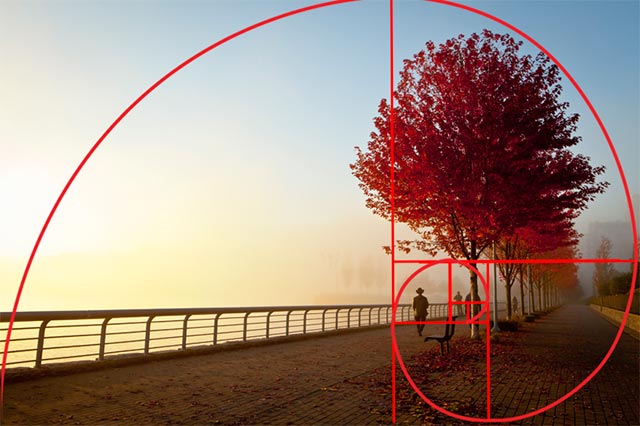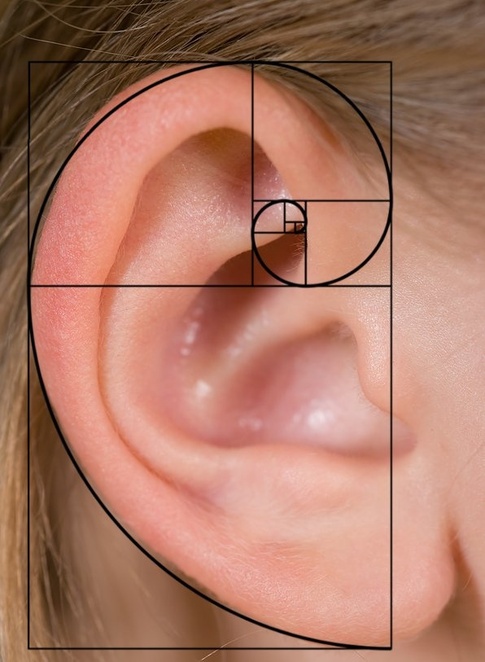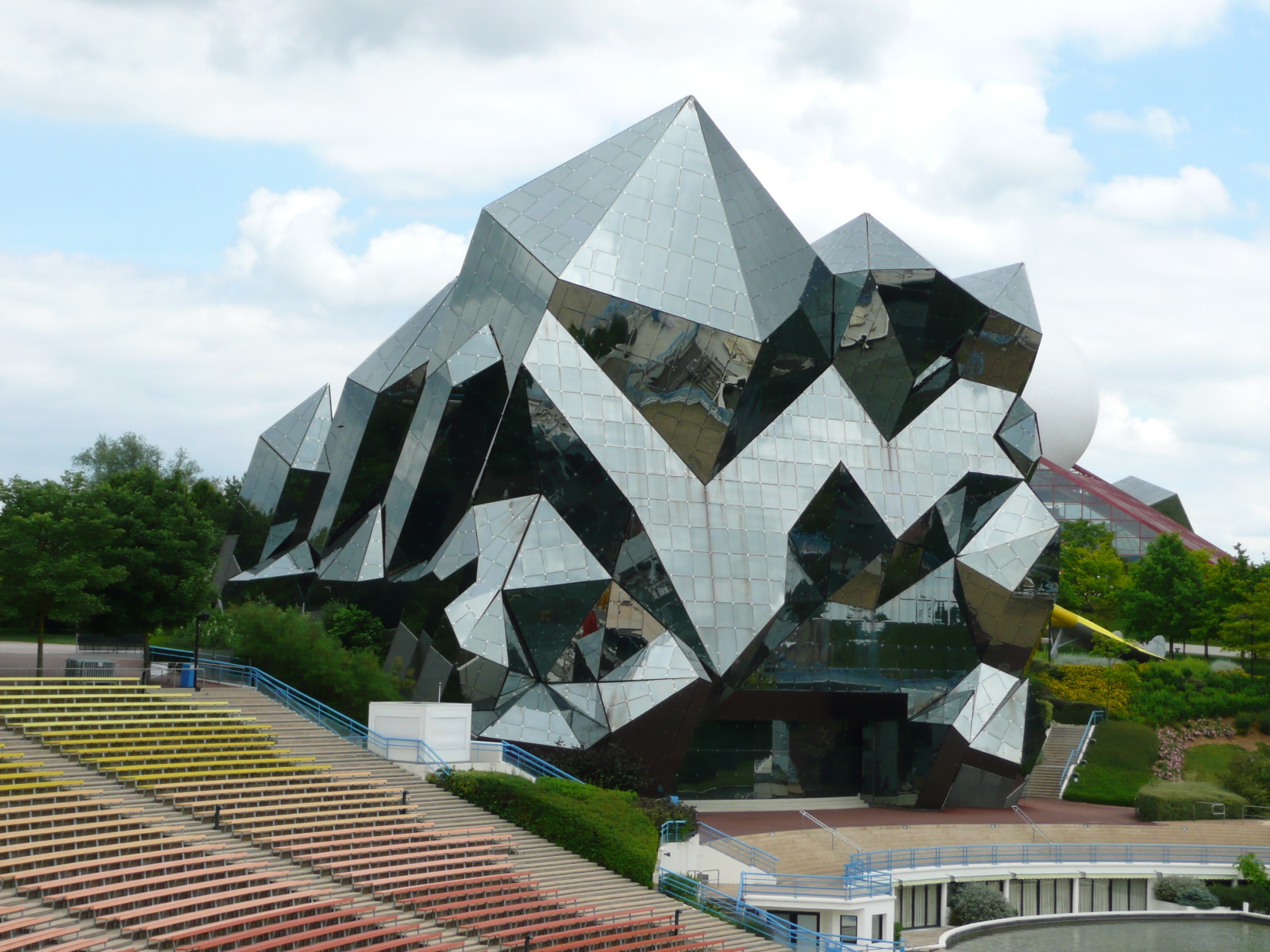The Maths of Design
People commonly group themselves into the category of those who are good at art or design, and those who are good at math or science. The general perception is that the skills needed to be successful as creative do not relate to the skills that are required to go places as the analytical. In reality, nothing could be more removed from the truth. Most design concepts such as symmetry, have direct ties to mathematical principals and equations, even if an artist or designer incorporating them may not be doing it consciously. Here are some very specific cases where mathematics acted as art and design’s true game changer.
The Fibonacci Sequence
The following number sequence; 0, 1, 1, 2, 3, 5, 8, 13, 21, 34, 55 is known as the Fibonacci sequence. If you take a closer look, you will notice that every number is the sum of the two previous numbers. This sequence plays a crucial role in art and design for centuries. But how does it manifest in visual medium?
Imagine if each number is a shape, more particularly, a square. And each number is a value of the length of its sides. We start with a 1-cm square and finish with 55-cm square. The combination of these squares can be used to form what is known as the golden rectangle. It can be found everywhere, from Mona Lisa to both classical and modern architecture. Many designers incorporate the golden rectangle in their designs by using the PHI calculator. This calculator helps determine how elements on the surface should be placed and sized, considering their mutual relation.
If we imagine those shapes to be circles and arranged in certain ways, these can form the basis of starbursts, floral patterns, branching and much more. As a matter of fact, the entire nature is testament to it, including the human face. A perfect spiral is also based on the Fibonacci sequence, evidence of which is omnipresent. Other works that contain the golden ratio include the Great Pyramids and the Parthenon. Not surprisingly, some of the most famous contemporary logotypes are based on the Fibonacci sequence (see the gallery below). It is safe to say this practice will continue for as long as mother nature connects the molecules the way it does. It determines the way we are wired to perceive the aesthetics of the world around us.
Polyhedra
A polyhedron is a three-dimensional structure made of collection of polygons, joined along their edges. Polyhedra have been integral part of art and design for centuries. Notably used by Salvador Dali in his paintings such are The Last Supper and Corpus Hypercubus, polyhedra were specifically addressed in the book Education on Measurement written by Albrecht Durer, educating artists about the perspective. Plyhedra prominently features in the modern architecture and industrial design around the world.
Fractals
Fractals are repeating patterns in mathematics, but also appear in nature. They can be noticed regardless of scale, no matter how closely you zoom in, you continue to see the same repeating patterns. This is known as self-similarity. However, not all self-similarity is the same. For instance, exact self-similarity means that the patterns within the fractal are perfectly identical, whilst quasi-self-similarity means that the patterns very closely resemble one another, but not perfectly. Examples of fractals come in nature:
● Crystals ● Snowflakes ● Blood Cells ● Citrus Fruit ● Waves ● Mountain Ranges
● Fault Lines ● DNA ● Pineapple ● Animal Color Patterns
In art, some of the best-known examples of the use of fractals can be found in Jackson Pollock’s paintings. In spite of this, for the most part, fractals in art are created digitally. In fact, digital art and animation are based on fractals. Web designers and graphic artists frequently use fractal images, for instance repeating patterns in background images on websites. Many believe that the repeating patterns in fractals are both soothing and aesthetically pleasing.
The reason why maths goes hand in hand with art and design is due to human brain appreciating and understanding consistency. For that reason the symmetry, balance, exactness, and proportion are such important parts of design. It is also why patterns commonly appear in art and design for centuries. For that reason, manifestations of the analytical tendencies of certain type of people is not that much different to their counterparts’ creative expressions. Mathematics is in the core of both.
Video Colour Grading
First impressions.
During my time in film school, I have to admit I never really payed too much attention to colour grading of the footage we shot. Nor did I held it in high regards while working on a TV show in my formative years. Maybe because I thought of it as a small part of editing process taken care of by somebody else, maybe I was just taking it for granted. Few tweaks and turns on the contrast, little play-around with a colour wheel and there we go. Later on during my professional life it became very important to me, if not crucial. As one wants to distinguish the final visual output of his/her video in the sea of similar videos, colour grading becomes a must. Integrated, LUT powered DSLR video workflow kind of demands it too. Otherwise, why shoot RAW video on Magic Lantern firmware and reduce your recording time to 25 mins per 128GB card? You have to try to do something cool with it.
As we humans are indeed the visual creatures, the best way to go about this topic is to see for ourselves. Video below beautifully demonstrates the importance and effectiveness of colour grading. The featuring sequences are part of the new independent movie called The House On Pine Street. The movie was colorized by Taylre Jones of GradeKC.
Beyond the basics.
Few media consumers truly understand just how much the colour of an image changes from the moment it is captured by a camera to the moment it is displayed. Ever since the dawn of film production, filmmakers and now also a digital video producers have been finding ways to manipulate the colour properties of the final image. From painstakingly colouring the individual frames by hand, or through a variety of chemical, and more recently, digital processes, colour was always as important in visual storytelling as it was sound or the frame. To its disadvantage in terms of wider recognition, it does indeed work on more subliminal level. More so then other cinematic elements, however. After the first few sequences, most people will take picture’s distinct colour for granted all the way until the closing credits. Or simply state the movie/video was beautifully shot, without second thoughts. However, with the recent proliferation of digital cinema cameras, shooting incredibly flat logarithmic profiles, thus preserving as much information as possible, the gap between captured and processed image is wider than ever.
Recently, I stumbled across a great, video colorizing themed article by V Renée, on No Film School, a go-to educational and entertaining website dedicated to video and filmmaking. Article points towards an editor Casey Faris and his Youtube workshop on colour grading. Without going to extreme, it coherently lays down the foundations of how different colour modes capture different moods and atmospheres.
Appreciation.
Random occasions resulting in beautiful images are great, but they are few and far between. More so, instances where only a short colour correcting session stand between the ok and great images are also rare. Most likely, there are dozens if not hundreds of working hours that create that ‘wow factor’. As color can affect a mood, evoke emotion or an era, set a tone or time of day, determine the interpretation and depth of a shot, it is practically all-powerful. A single shot can create the emotional attachment viewer will remember. But there is a science and and art to creating those images. And it should be appreciated.
Why do two colors, put one next to the other, sing? Can one really explain this? No.
Pablo Picasso
Marketing Use of Culture
You need a new tablet. You spend time thoughtfully analyzing various vendor sites to figure out the best fit for your needs. Finally, you think you’ve made up your mind. As you continue browsing there’s a paid for advertising for a different tablet. You had only a few seconds to absorb its message, but you’re swayed in ways you hadn’t anticipated. What on earth is going on?
According to various research over the past few years, it may have to do with your cultural biases. Or more specifically, the instances in which culture matters—and the times it doesn’t. So, when does culture influence consumer purchasing decisions? This is quite a complex issue. For example, research conducted by Donnel Briley and Jennifer Aaker found out that culture-based differences largely emerge when information is processed in a cursory and spontaneous manner. So when you caught a glimpse of that Google advertisement, you were likely to be influenced by content that appealed to your particular culture. It could be a slang word, an image of particular locality or a quote from your favourite book. But when you premeditate things, by examining information more carefully — attempts by advertisers to rely on cultural factors tended not to be as successful.
Digital marketing industry due to its very nature is much quicker and versatile in adopting various cultural subtleties than some other forms of advertising. The traditional billboard advertising, for instance, require actual physical space and more of consumers’ time. More attractive the space, more frequented it is by the potential consumers. Naturally, the billboard installations would occasionally venture into the first-hand tasteless trivialization of the very cultural icons they were trying to relate its product to. E.g. – some time ago, a group of the world’s leading cultural experts have launched a stinging attack on the Italian government over the use of giant advertisements placed on some of Venice’s most historic sights. Among others, Palazzo Ducale, a stand-out architectural masterpiece of both Gothic and Renaissance era, had its views all but obliterated by Coca-Cola advertisement. Needless to say, there were negative repercussions among the public and tourists alike. Going digital, we are making a progress after all.
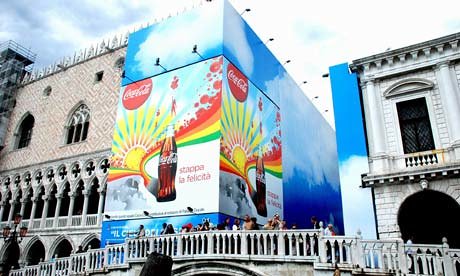

Back to the cultural aspect of digital marketing, there are several key components every company wishing to go national, continental or global has to have in mind. Values and attitudes vary between nations and even vary within nations. Local history, customs and habits are less likely to burden a particular digital marketing campaign within the national borders. But knowing what the local population keeps close to heart is always a bonus. A person in the West of Ireland will probably feel more related to the content if spoken to in Gaelic. However, a good measure is required too, as it’s ever so easy to fall into the trap of triviality and the campaign backfires. Things are getting even more complicated when moving abroad. Colours, types of emoji and symbols, people’s clothing, use of hands. It all matters. So do names and titles. For instance in Europe, especially the south, white colour is commonly seen as a symbol of purity, peace and summer whilst in China, the white is associated with death. Peace and happiness are linked to red. In 2004, China banned a Nike television commercial showing U.S. basketball star LeBron James in a battle with animated cartoon kung fu masters and two dragons, because it was argued that the ad insults Chinese national dignity. In Europe, we tend to ignore emails with generic titillation such is “Dear Customer”, whilst in Asia, it is considered rude to call somebody by their family name (let alone the first name) unless invited to. Even within Europe, most Continentals wouldn’t look too favorably if being called by their first name as these are typically only used by friends and family.
Locally, culture could relate to a country (national culture), a distinct section of the community (sub-culture), or an organization (corporate culture). Whilst good quality translation and localization are important for any multinational digital marketing strategy, familiarity with the local (sub)cultural heritage and contemporary trends is bread and butter of any local small and medium-sized business. The cultural scrutiny of the local consumer towards the local businesses is often harder test to pass then operating within the international scope of advertisement. As relative budget sizes for marketing offer little or no room for error, doing one’s homework on the topic becomes an imperative. More so, this kind of knowledge is usually fairly effective ice-breaker too.
Advertising is about norms and values, aspirations and prejudices. It is about culture.
Anil Ambani, Chairman Reliance Group
Genuine SEO - Hard Work And Creativity (No Magic Here)
People are usually keen to know how much will SEO cost them and what exactly are they getting for their money’s worth. The truth is complex, as it is the SEO industry itself. There’s no ‘one size fits all’ type of solution. In my humble opinion, that is the most honest answer one can receive. “There are no quick fixes”, would be my favourite though. But why? Surely, there are so many SEO specialized businesses out there, most of them promising the ‘first pager’ in no time. And their services seem to be fairly affordable considering the obvious advantages coming out of search engine prominence. Well, that’s exactly where the catch is.
As in any other hyped-up industry of its time, SEO and digital marketing are no different in terms of unrealistic expectations and sense of urgency coming from the client base and the consequent surge in ‘snake oil’ traders satisfying mostly subjective tendencies of being ‘up there’ and with the latest ‘must have’ under the belt. Combination of these two could not be more different from the actual reality of how SEO works. On the consumer’s end, each website is as unique as the next and some industries are more competitive both online and in a particular geographical area. Therefore, its competitors require completely different strategies.

For instance, SEO strategy towards a locally based landscaping business could not be more different then to a health insurance industry largely existing within and depending upon highly competitive and congested online market. In Ireland, an average monthly search for keywords ‘health insurance’ is 4,400, whilst ‘landscaping Dublin’ only generates 720 inquiries ( Source: GoogleAdwords, Data generated on 29th of June 2016). Consequently, a suggested bid, based on the costs-per-click (CPCs) that advertisers in the Irish market pay for a keyword ‘health insurance’ is €4.93, whilst ‘landscaping Dublin’ stands at €1.31. Although the both values are estimated, the picture is quite clear. So how on earth can anyone offer the same SEO package to both clients in the above example? The truth is fairly simple though; lot of SEO bundles, particularly from the ‘solely online’ companies from across the globe, usually include a task list that look fairly impressive on paper but is actually filled with quick, easy to do operations done by automated software. Our advice – meet your SEO person, explain what is special and unique about your business first hand. Get them to know you and get to know them.
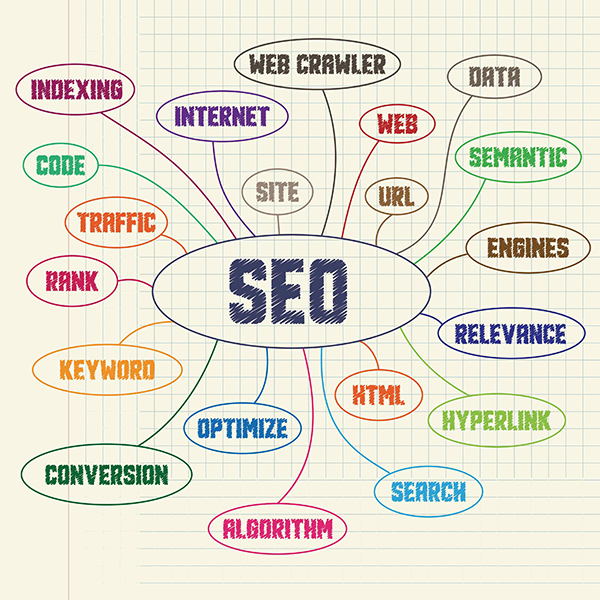
While it is quite tempting to use ‘€99 a month’ type of services, especially if one doesn’t know how SEO works, it is most likely that a business owner will only put in danger all the previous work that went into the website’s online presence. Typically for these types of SEO “services” which are not based on genuine, relevant content, there is indeed an initial improvement in ranking as Google sees a big increase in the number of backlinks to the website. It doesn’t know yet what is the quality of those links. Customer is happy with the results, not questioning the process which actually consist of automated applications or ‘false traffic’ generators via link directories, purposely set-up false blog networks and automated spam comments. Only when Google gets back to assess the rank-worthiness of those links, the drama starts. Google usually just penalises the website without warning, or reasoning, by dropping its ranking to abyss, in the process nullifying the positive, honest work too. The blame game, change of tone, ignored emails and contract terminations usually closely follow. This doomed relationship is nicely described in a blog by William Jones. On the opposite spectrum of things, one of the main principals of a good, honest, Google favoured SEO strategy is relevant, well-written and linked content that puts consumer in front. Increasingly complex Google algorithms, together with a rapid development of Artificial Intelligence, in matter of fact, only allow the massive-scale application of a simple, common sense – by putting the value on content that is beneficial to its consumers. Once again, content is the king!
SEO Copywriting
Therefore, in its core, SEO isn’t that complicated, once it’s understood that people come before search algorithms, or efforts to trick them in order to boost ones SEO ranking. We have plenty of evidence suggesting that Google algorithms are getting so complex and powerful that tendencies to deceive them will be considered a waste of time anyway. Time and money better spent on writing the relevant content. Which is beneficial to everyone. So, how is it done? Google is measuring the authority and relevance of the page. As with most other things, authority of a certain content is measurable by the amount of trustworthy links pointing towards its direction. The relevance is based on several factors, including where and how often one uses certain words in that piece of content.
Copywriting is the art and science of creating content that prompts the consumer to either buy a product, subscribe to a list, goes for a trial, or take some other action that will benefit the business. A copywriter is someone who understands people, knows what the audience likes, and chooses the words that will appeal to them. The headline, words, phrases, sentences, and paragraphs used in the content have to persuade readers to take a specific action. SEO copywriting, in addition, also require a substantial technical acumen and ever-developing technology awareness.
That skill takes time, talent, research and above all – lot of hard work.
Google only loves you when everyone else loves you first.
― Wendy Piersall
Use Of Promo Video
Beside being a powerful tool for brand building, promo video will boost your SEO rankings and is an effective way to increase consumer engagement. It is known as rich media content and substantially increases the time spent on a site and helps convert sales. Used in a smart way and with purpose, video can transform your website into a dynamic interactive site attracting repeated visits. In the US alone, YouTube accounts for around 20% of all downstream internet traffic and even more impressively has a status of the world’s second biggest internet search engine. So, how to go about the video promo?
First and foremost, define the purpose of your promo video. Before you get in touch with a production studio or agency give yourself a little homework. The length, format, look&feel, detail level and the location setting (just to name few) will greatly depend on what you have in mind for this video to achieve. And no doubt, it will save you money. Here are the several examples what promotional videos are great for.
- Show off a service or/and product. If you offer your services or sell a physical product, video is best way to give people a sense of what is that you offer/sell.
- Explain how to do something. ‘How to’ videos are a good way to give people some useful information, while also reminding them of your product or service.
- Bring testimonials to life. Many companies use written testimonials on their websites. Stand out and commission a customer interview to be filmed.
- Personalize your business. Welcome visitors to your site, introduce your staff or film a ‘typical business day’. This sort of content adds personality and increases the chance of emotional connection with potential customers, especially if you are a small business in highly competitive industry.
- Share the insider’s expertise. You can use video to provide commentary on industry news, or to offer detailed information about your industry. This can help build your reputation and credibility.
- Promote a project. If you’re involved in a project outside your core business activity or sponsoring an event, share it with your client base. They will appreciate it.
- Moving premises. If you are moving to a new location, let your customers know.
Quality of content = Attention span
Nobody likes being pitched to. Your promo video has to be way more than just a sales pitch. Make it stylish, tell a story that is uniquely yours, yet consumers can relate to. Ask video professionals for help with a script. Even modestly budgeted promotional video will stand out if originally scripted and professionally executed. Jupiter Research found out that 60% of consumers are less likely to return to a site if the video is of low technical quality.

Video content marketing
Marketing your online videos takes almost as much effort and finesse as making them. Several hashtags and a content description will not be enough. Here are several video marketing elements that the overwhelming majority of most successful online video campaigns have in common.
- Produce a lot of diverse content, regardless if it’s for your YouTube channel, Vimeo or Vine. They all link back to your site and social media (great for SEO too!). Your videos can range from 20 sec impact sequences to 20 min talks. Take different demographics and geo-tags into account. Be prolific!
- Create a visually symbiotic co-relation between your online assets – YouTube account and a website, for example. Consistent branding and YouTube channel customization occur in 63 percent of the most effective business-oriented YouTube channels. Other video platforms have similar stats and customization possibilities.
- Engage your community. Audiences are about 10 times more likely to engage, embed, share, and comment on video content than blogs or social posts. YouTube and Vimeo are not just an online video repositories; they are also a powerful social media platform where you will more likely drive consumers’ action.
- Embrace video platform advertising (YouTube in particular). It is a critical part of effective video content marketing and not the same as Google’s AdWords for example. Experiment with hyper-targeting options: contextual, behavioral, geo, retargeting and search. It will bring you up to 10 times more engagements and calls to action.
Online video is the Swiss army knife of internet marketing. It really can be used all over the customer life-cycle, whether it’s customer service, marketing, or even recruitment.
Mark Robertson, Founder ReelSEO
Digital Marketing - 2016
At the start of each year, there is always a lot of predictions for the year ahead and the latest marketing trends! As we near the end of the first half of 2016, it as good time as ever to reflect on the early predictions and see how they worked out since. In this article we will illustrate the latest trends in digital marketing which look set to continue into the rest of 2016.
First, something we all knew for quite a while. Traditional vs Digital Marketing already being one-sided match became even more so; the prevalence of online channels influence is clear with 82% of purchasers researching online against 4% using offline only.
Furthermore, the research data below (dated from February this year, conducted by smartinsights.com) clearly shows dominance of content marketing segment.
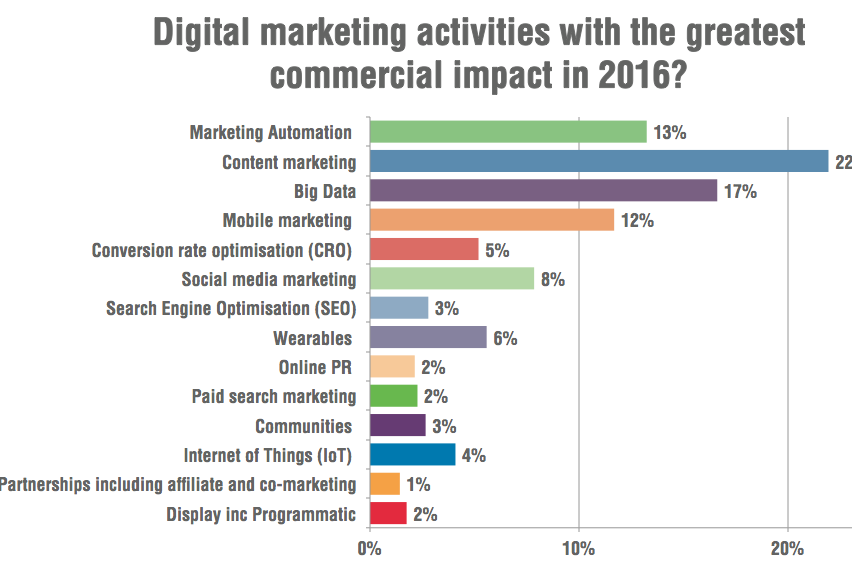
Image 1 – Source: smartinsights.com
Image 1 – Agenda
- Big Data (including market and customer insight and predictive analytics)
- Content marketing
- Communities (Branded niche or vertical communities)
- Conversion rate optimisation (CRO) / improving website experiences
- Display (Banners on publishers, ad networks social media including retargeting and programmatic)
- Internet of Things (IoT) marketing applications Marketing Automation (including CRM, behavioural Email marketing and web personalisation)
- Mobile marketing (Mobile advertising, site development and apps)
- Paid search marketing, e.g. Google AdWords Pay Per Click Online PR (including influencer outreach)
- Partnerships including affiliate and co-marketing
- Search Engine Optimisation (SEO) S
- Social media marketing including Social CRM and Social Customer Care
- Wearables (e.g. Apple Watch, activity trackers, augmented reality)
“If you can take your personality and inject it into the message you share, you’ll be one step ahead in the content marketing game.”
Jason Miller, Global Content Marketing Leader, LinkedIn
Changes in consumer use of digital media and technology is core to understanding trends in digital marketing. It is certainly getting more complex, as today’s customer travels across multiple devices over stretched period of time, particularly for high involvement or high-value purchases, such as insurance or property. Lower value, or so-called everyday goods and services purchases are not far behind as consumer habits set. Also, consumers are increasingly unaware or pay little attention to what digital platform they are using. This particularly highlights the imperative of digital content integration.
Unsurprisingly, the use of mobile marketing will continue to be one of key trends to follow in 2016 and beyond. This creates even more urgency for businesses to formulate their online presence with mobile platforms in mind.

Interestingly enough, most businesses participating in recent polls by smartinsights.com suggested the progress towards fully integrated planning of digital and traditional activities has been made, but there is still a massive room for improvement. Whilst 4% of businesses solely use digital marketing activities, the rest are still combining their efforts with traditional methods. Thus the figure of 5% of those who made the full integration so far looks very slim. On the other hand 33% are both, or actively trying to or will do so in the near future.
Based on these trends and data, it is safe to assume an online content, regardless of the businesses’ size, will play a pivotal role in the marketing activities in times to come. Great news for the creative industries.





